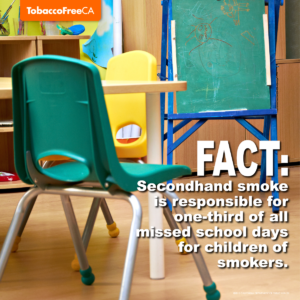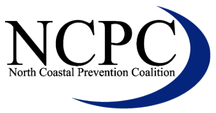Secondhand smoke is the mainstream smoke exhaled from the smoker and sidestream smoke from the end of a cigarette, cigar, or pipe. Secondhand smoke contains more than 4,000 substances, including over 50 compounds that have been identified as carcinogens (cancer-causing).
The California Air Resources Board determined that secondhand smoke a Toxic Air Contaminant and the US Surgeon General declared there is no risk-free level of secondhand smoke exposure; even brief exposure can be harmful to health.
The link between secondhand smoke and disease is well known. It is linked to the following in non-smokers:
- Lung cancer
- Heart disease
- Breathing problems like coughing‚ extra phlegm‚ wheezing‚ and shortness of breath.
Secondhand smoke is also danger to our pets. Exposure can put them at risk of respiratory issues and cancers.

Mothers who breathe secondhand smoke while pregnant are more likely to have babies with low birth weight.

In children secondhand smoke exposure increases the:
- Risk of lower respiratory tract infections such as bronchitis and pneumonia
- Prevalence of fluid in the middle ear, a sign of chronic middle ear disease
- Frequency of episodes and severity of symptoms in asthmatic children
- Risk for sudden infant death syndrome (SIDS)

Since recreational marijuana, also known as cannabis, has been legalized in California, there is an increasing overlap between tobacco, marijuana, and e-cigarette use. As a result, more people are being exposed to marijuana smoke inside of their homes, especially in an apartment complex. Secondhand marijuana smoke contains many of the same chemicals as secondhand cigarette smoke and can cause health complications as a result. To learn more about secondhand marijuana smoke, see our fact sheet here.
Since recreational marijuana, also known as cannabis, has been legalized in California, there isan increasing overlap between tobacco, marijuana, and e-cigarette use.
As a result, morepeople are being exposed to marijuana smoke inside of their homes, especially in an apartmentcomplex.Since recreational marijuana, also known as cannabis, has been legalized in California, there isan increasing overlap between tobacco, marijuana, and e-cigarette use.
As a result, morepeople are being exposed to marijuana smoke inside of their homes, especially in an apartmentcomplex.Secondhand smoke is also known as Environmental Tobacco Smoke. Secondhand smoke includes both exhaled mainstream smoke from smokers and sidestream smoke from the end of a cigarette, cigar, or pipe. Secondhand smoke contains more than 4,000 substances, including over 50 compounds that have been identified as carcinogens.
The link between secondhand smoke and disease is well known, and the connection to cardiovascular-related disability and death is also clear. According to the American Heart Association, about 37,000 to 40,000 people die from heart and blood vessel disease caused by other people’s smoke each year. Of these, about 35,000 nonsmokers die from coronary heart disease, which includes heart attack.
In adults:
Secondhand smoke is a human lung carcinogen, responsible for approximately 3,000 lung cancer deaths annually in U.S. nonsmokers. ETS has been classified as a Group A carcinogen under EPA’s carcinogen assessment guidelines. This classification is reserved for those compounds or mixtures which have been shown to cause cancer in humans, based on studies in human populations.
In children:
Secondhand smoke exposure increases the risk of lower respiratory tract infections such as bronchitis and pneumonia. EPA estimates that between 150,000 and 300,000 of these cases annually in infants and young children up to 18 months of age are attributable to exposure to secondhand smoke. Of these, between 7,500 and 15,000 will result in hospitalization.
Secondhand smoke exposure increases the prevalence of fluid in the middle ear, a sign of chronic middle ear disease.
Secondhand smoke exposure in children irritates the upper respiratory tract and is associated with a small but significant reduction in lung function.
Secondhand smoke exposure increases the frequency of episodes and severity of symptoms in asthmatic children. The report estimates that 200,000 to 1,000,000 asthmatic children have their condition worsened by exposure to environmental tobacco smoke.
Secondhand smoke exposure is a risk factor for new cases of asthma in children who have not previously displayed symptoms.



